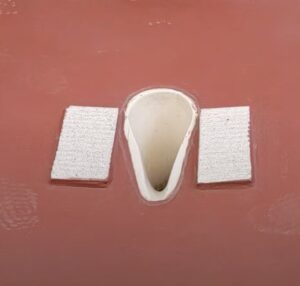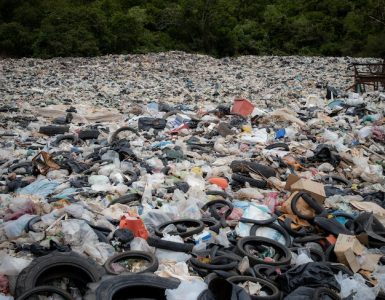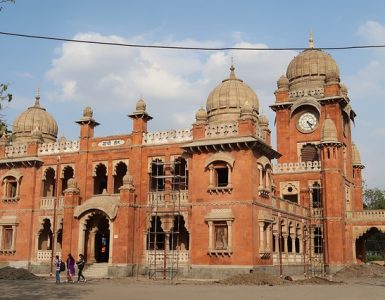Today India celebrates a decade of the Swachh Bharat (Clean India) Mission launched on 2nd October 2014, marking a transformative shift in India’s approach towards cleanliness and sanitation.
The launch of this mission coincided with the 145th Gandhi Jayanti, a day when the nation celebrates the birth anniversary of Mohandas Gandhi. Apart from his involvement in India’s freedom struggle during British rule, Gandhi is also credited for putting a lot of importance towards sanitation and cleanliness.
While India achieved considerable economic progress after its Independence, in terms of sanitation and cleanliness, it seriously lacked, despite multiple programs, like the Central Rural Sanitation Programme, the Total Sanitation Campaign, and the Nirmal Bharat Abhiyaan.
Millions of people practiced open defecation due to the scarcity of toilet facilities in large parts of the country. As per the Census of 2011, sanitation coverage as measured by the number of households owning toilets was just 34 percent in rural India, and about 550 million people used to defecate in the open.
In 2014, when Narendra Modi became the Prime Minister of the country, cleanliness and sanitation were strong on his agenda.
A major motivation for the commitment is his humble background. He has spent his early years living in impoverished conditions and he realised the pitfalls of unclean surroundings and lack of toilet facilities, especially for rural women.
Within six months of becoming the PM, Modi launched the Swachh Bharat Misson on 2nd October, to eliminate open defecation and improve sanitation and waste management facilities across India.
Another important part of this mission was to bring behavioral change in the communities and educate people about waste management and hygiene.
Modi advocated the cause of the Clean India Movement on a massive scale. He spoke about the cleanliness on multiple forums, at public gatherings, and even in his annual Republic Day speech.
The mission soon gained traction, involving millions of government employees, students, and citizens from cities, towns, and rural communities.
Even environmentalists, film personalities, sports celebrities like Sachin Tendulkar, and people from the corporate world participated in events like sweeping the streets to promote Clean India.
In the last 10 years, the Swachh Bharat Mission has become a powerful catalyst in sanitation and waste management initiatives. The scheme has made many tangible improvements in waste management and sanitation.
Let us look at the impact of the Swachh Bharat (Clean Indian) Mission.

Toilets
More than 120 million individual household toilets have been built over the years. The sanitation coverage has increased from 39 percent in 2014 to 100 percent in 2019.
A large part of toilet construction is provided in rural areas, especially in poor and disadvantaged families.
Health
One of the biggest impacts of the Swachh Bharat Mission is the impact on the health and well-being of a large section of society, especially those living in rural and semi-rural areas.
The sanitation transformation has resulted in a reduction of diseases, and waterborne infections, and improvements in health parameters as shown by various studies.
A recent study titled ‘Toilet Construction under the Swachh Bharat Mission and infant mortality in India’ emphasizes the profound impact of the Swachh Bharat Mission on public health in India.
Published in Nature, the authors have analyzed data from 640 districts in India over a 10-year time frame (2011-20) on trends in infant mortality rates and under-five mortality rates. They found a strong association between increasing toilet access and declining child mortality.
Based on their estimates, the increased accessibility of toilets at scale may have contributed to averting approximately 60,000–70,000 infant deaths annually.
In another study by WHO, the construction of toilets in India averted over 0.3 million diarrhoeal deaths between 2014 and 2019.
Women
One of the most impactful successes to emerge from the Swachh Bharat Mission is the development of inclusive sanitation facilities, particularly for women.
Having access to secure, clean, and accessible toilet facilities, has profoundly changed the lives of women. The toilet ensures that women can navigate public spaces with confidence and comfort.
Another interesting benefit of India’s sanitation facilities was an increased school enrolment ratio and improved health standards for young girls. As per a survey, before 2014, 58 percent of preschools had no toilet at all, which prevented girls’ access to school education.
Cleanliness Awards
Another initiative under Swachh Bharat is Swachh Survekshan, which is an extensive sanitation survey across several Indian cities and towns to check the progress in terms of sanitation and cleanliness.
The ranking system evaluates the regions across several parameters, which fosters a spirit of healthy competition among those regions to continuously improve.
Many municipalities initiated massive door-to-door waste collection and disposal efforts as part of the Swachh Bharat project. This aided in addressing the rubbish disposal issue.
Indore, a city in the central part of the country, is consistently ranked as the cleanest city in India according to the Swachh Survekshan. Indore’s achievement has encouraged many other cities like Surat, Vijayawada, Navi Mumbai, and more cities to follow a clean city model.
Increasing Awareness
Creating awareness among the people regarding cleanliness has been one of the most unique parts of the Swachh Bharat initiative. The effort of prime minister, politicians, celebrities, NGOs, organizations, and other national campaigns have mobilized over a billion people in India.
The public was made aware of the dangers of open defecation, the benefits of toilet use, and most importantly keeping the surroundings clean and maintaining hygiene.
Wrapping Up
Considering the country’s size, the diversity of its people, and the scale of its population, Swachh Bharat is one of the largest sanitation drives in the world. This is a template for other social transformation missions in the country and other parts of the world.
The 10 years of the Swachh Bharat Mission have brought a remarkable transformation and traceable benefits to society.
However, a lot needs to be done. The country’s size, population, and diversity present innumerable challenges.
Now if you travel on trains, sights of open defection near the railway line are almost negligible, but wrappers of chips, candies, biscuits, etc., and plastic bottles are commonly seen on streets and footpaths in the country.
In addition to the public litter, dirty water bodies, unscientific waste management, and air pollution are other major challenges.
So yes, India’s phenomenal journey towards sanitation has ensured social, environmental, and economic gains in the society. However for the behavioral change to get rooted in people’s consciousness, it is still a long journey to cover.
The article is written by Varun, Founder of Change Started






Add comment